The Ultimate Guide to the Shimla to Manali Road Trip
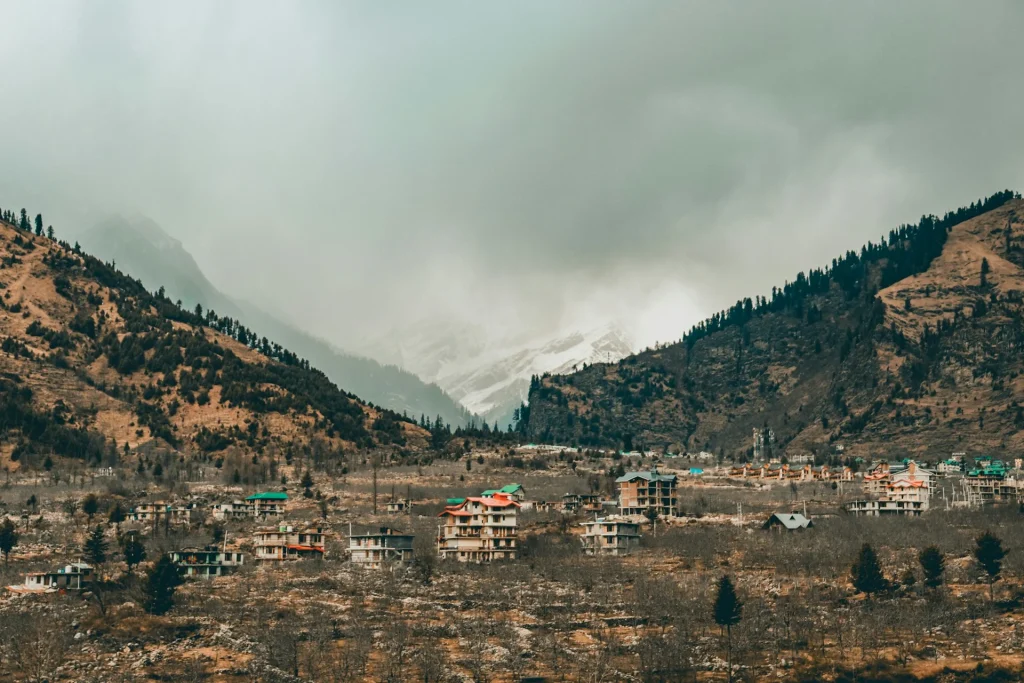
Beginning — The Call of the Himalayan Road The scenic highway from Shimla to Manali is a road tripper’s dream come true. It has winding paths framed by tall, snow-capped peaks, colorful villages, and charming roadside cafes serving hot momos. This famous road in northern India is more than just a way to get from one famous hill station to another; it’s an epic journey in its own right. It gives you nonstop beautiful views of the foothills of the Himalayas, with the turquoise Beas River always by your side, cutting through lush valleys. The 240-kilometer drive can be done in one long day, but it’s best to take your time and enjoy the culture, adventure, and food along the way over two, three, or even four days. This guide is the best thing you can bring with you on that trip. We will begin in the colonial charm of Shimla, then visit all the important stops along the way, from the quiet beauty of Naggar to the busy valley of Kullu. Finally, we will reach Manali, the adventure capital of the north. The Tarzan Way brings immersive storytelling journeys to life, turning this drive from a simple transfer into a rich cultural expedition, revealing hidden gems and local stories at every turn. Are you ready to pick up the phone? Let’s plan the best road trip through the Himalayas. Important Points The Route: A 240-kilometer drive (about 8 to 10 hours) that connects two of Himachal’s most well-known hill stations. Best to do over two or three days. Shimla is the starting point. You can learn about colonial history, visit The Ridge, Jakhoo Temple, and the UNESCO Kalka-Shimla Toy Train. The Journey: The drive itself is a draw, as it goes along the Beas River through towns like Kullu and Naggar. Key Stops: Kullu is great for river rafting, Naggar has a historic castle, and Manikaran has holy hot springs. Destination (Manali): a place for adventure and culture, with paragliding in Solang Valley, the Hadimba Temple, and Old Manali’s cafes. Important Planning: You need a Rohtang Pass Permit. Because of the risk of landslides, don’t take this route during the peak monsoon season (July to August). Be a responsible traveler: this ecosystem is very delicate. Working with guides like The Tarzan Way makes sure that your trip is safe and responsible. Shimla: The Beginning of the Colonies Credit: Unsplash Shimla, the “Queen of Hills” and the former summer capital of British India, is where your road trip starts. This city is the perfect first stop. It’s a great place to get used to the area and learn about its history before you go deeper into the mountains. Its neo-Gothic buildings and pedestrian-friendly streets give it an old-world charm that makes for a relaxing start to your trip. The Ridge and Mall Road This is the most important part of Shimla. The Ridge is a big, open-air platform that lets you see the Shivalik mountain ranges from all sides. On either side are Christ Church, the State Library, and a row of stores. Mall Road, a street without cars, is just below it and is full of life. It’s a great place to take a leisurely walk, buy souvenirs, and enjoy the lively atmosphere. Jakhoo Temple This old temple is on top of Jakhoo Hill, the highest peak in Shimla. It is dedicated to Lord Hanuman, the monkey god. There is a huge statue of the god that is 108 feet tall and can be seen from most of the city. There are two ways to get there: a beautiful hike or the “Jakhoo Gondola,” which is a cable car that gives you amazing views from above. Toy Train from Kalka to Shimla The trip to Shimla can be part of the fun. If you’re coming from Kalka (near Chandigarh), leave your car behind and take this train, which is a UNESCO World Heritage Site. This narrow-gauge railway, which was an engineering marvel at the time, goes through 103 tunnels, over 800 bridges, and offers stunning views of the forested hills. Tips for Travelers Jakhoo Monkeys: At Jakhoo Temple, be very careful with your things, like your phone, sunglasses, and food. Everyone knows that the monkeys that live there are very naughty. Booking a Toy Train: During peak season, tickets for the toy train sell out weeks or even months in advance. You can book online through the IRCTC website. Best Views: For the best pictures of the Himalayan skyline, go to The Ridge during the “golden hour,” which is either sunrise or sunset. Quick Facts The height of Shimla is 2,276 meters (7,467 feet). The Ridge, Kalka-Shimla Railway, and colonial architecture are some of the things that make it famous. Sita Ram & Sons for Chana Bhatura and Indian Coffee House for a nostalgic feel are two places you have to eat. The Journey: Driving on the Shimla-Manali Highway The trip from Shimla to Manali is a lot of fun. You will start by going down from Shimla’s heights and eventually meet the Beas River, which will guide you most of the way to Manali. The roads wind through tall pine forests, pass through small villages, and have many places where you can stop and take pictures of the beautiful scenery. Route and Conditions: NH 205 and NH 3 are the main roads that lead to it. The distance is only about 240 km, but it takes 8 to 10 hours to drive because the roads are winding and there may be traffic. That’s why it’s a good idea to stop along the way. What Makes It Popular with Travelers? The trip is the goal. The pine and deodar forests of the Shimla area give way to the more rugged, open, and beautiful valley of Kullu-Manali. Important Stops Along the Way: Kullu, Naggar, and More Credit: Unsplash Take your time on this drive. The towns and villages between Shimla and Manali are interesting in their own right, each
Beyond the Pink: The Ultimate Guide to Jaipur That No One Knows About
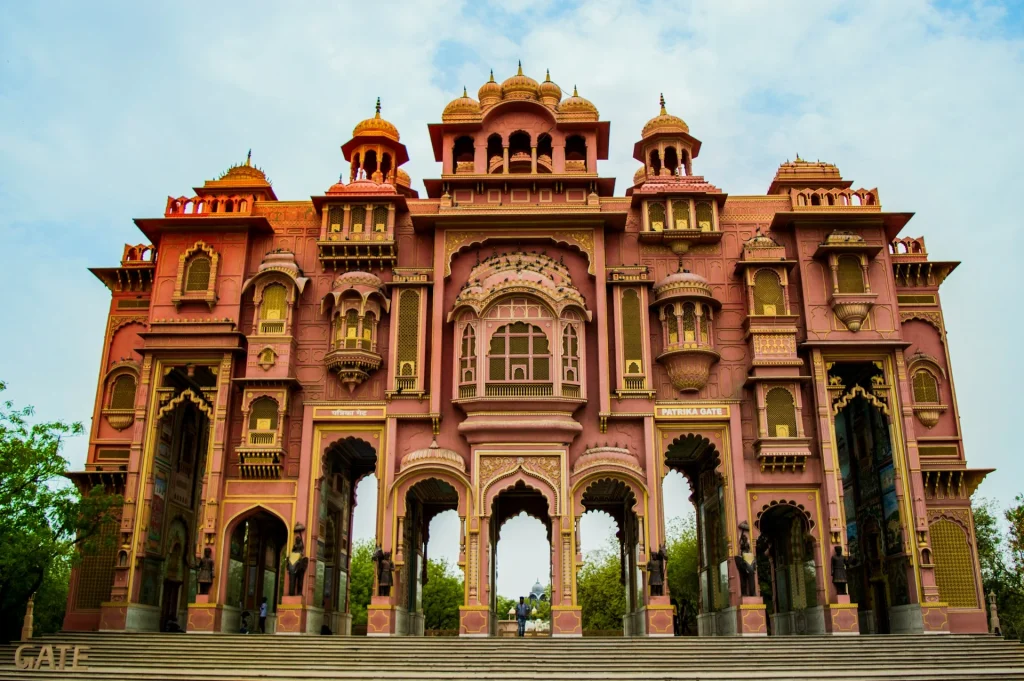
The Secrets of the Pink City: An Introduction Jaipur, the beautiful capital of Rajasthan, is a colourful, cultural, and royal city. The Pink City’s grand forts, opulent palaces, and vibrant bazaars are legendary, drawing travelers into a storybook of maharajas and empires. But there is more to Jaipur than just Hawa Mahal and Amer Fort. It has peaceful gardens made for a beloved queen, holy temples full of monkeys, old stepwells with impossible shapes, and urban forests where leopards roam. This guide will help you figure out those mysteries. We’ll take off the tourist trail’s layers to show you the lesser-known treasures that are often right in front of you, giving you a deeper, more personal look at Jaipur’s true soul. These are the places that tell a different story, one of love, spirituality, amazing architecture, and wild nature. The Tarzan Way makes immersive storytelling journeys possible, allowing travellers to go beyond the obvious and connect with the living history and hidden corners of Jaipur in a way that is both meaningful and memorable. Are you ready to see the Jaipur that most tourists don’t see? Let’s go look around. Important Points Beyond the Forts: This guide reveals 10 of Jaipur’s best-kept secrets, including royal gardens, old stepwells, and urban leopard safaris. A Different View: Check out architectural wonders like Panna Meena Ka Kund and Gaitore Ki Chhatriyan, which are great places to take pictures without the crowds. Find peace at the sacred Galta Ji Temple (The Monkey Temple) and the 17th-century Jagat Shiromani Temple. Nature in the City: Visit the amazing Jhalana Leopard Safari Park, Chandlai Lake, which is a birdwatcher’s paradise, and Asia’s largest circular park. Cultural Immersion: Don’t just shop at Bapu Bazaar; check out the Anokhi Museum, which is all about the art of block printing. Helpful Tips: Each location has important “Traveler’s Tips” on when to go, how to act, and how to get the most out of your visit. Sisodia Rani Ka Bagh: A Love Garden for Royals Credit: Unsplash Sisodia Rani Ka Bagh stands out as a peaceful oasis in the rough terrain of the Aravalli Hills. Maharaja Sawai Jai Singh II had this beautiful multi-tiered garden built in 1728 for his second wife, a princess from the Sisodia, Udaipur. It was a gift of love, a place for her to get away from the court. The way the garden is laid out is a perfect mix of Mughal and Rajput styles. There are several terraces with cascading water channels, fountains, and pavilions on them. The walls are covered in colourful murals that show scenes from the life of Lord Krishna, which show how much the queen loved him. It’s a lovely place to get away from the noise of the city, and it’s often hidden by the city’s bigger buildings. Advice for Travellers If you’re driving from Agra, this garden is right on the way, so it’s a great first stop. You can also easily visit both sites in one trip because they are so close to each other. The best times to go are early in the morning or late in the afternoon, when the light is soft and the mood is calm. Quick Facts The Maharaja Sawai Jai Singh II built it in 1728. Architecture: A mix of Mughal (Charbagh) and Rajput styles Location: 8 km from Jaipur on the road to Agra What it’s known for: its romantic history, beautiful murals, and calm atmosphere The Sacred Monkey Temple is called Galta Ji Temple Credit: Unsplash Galta Ji Temple is a peaceful and spiritual place that is hidden away in a rocky gorge just outside the city. The Monkey Temple is a famous Hindu pilgrimage site that is built into the Aravalli Hills. There are a lot of temples, pavilions, and, most importantly, seven kunds (water tanks) that are fed by natural springs. The main attraction is the natural spring that flows from the top of the hill and fills a series of sacred pools. Pilgrims come to these pools to bathe in the holy water. The temple is surrounded by rocky hills and has a peaceful feel to it. There are hundreds of rhesus macaques in the area, and they are considered sacred. This is why the temple is known by this name. Tips for Travellers Be Monkey-Aware: Don’t carry food in plain sight. Make sure your bags, phones, and sunglasses are safe. The monkeys are very brave and will take things. The best time to go is in the late afternoon. The temples are lit up in gold, and you can see the monkeys play as the sun goes down. Dress Code: This is a working and holy place of pilgrimage. Wear clothes that aren’t too revealing, like covering your knees and shoulders. Why does it draw tourists?? It’s a living piece of culture. It’s not a clean tourist site; it’s a living centre of faith where nature and architecture come together in a way that is both raw and unforgettable. Panna Meena Ka Kund: A Wonder of Architecture Credit: Unsplash Panna Meena Ka Kund is a beautiful example of Jaipur’s architectural excellence. It’s a hidden gem near the base of Amer Fort. This 16th-century stepwell, or baori, is a work of art that many tourists miss on their way to the fort. It has a unique design with symmetrical, diamond-patterned staircases on three sides and a pavilion with multiple stories on the fourth. The thousands of steps make a beautiful geometric wonderland that changes with the light and shadow, making it a photographer’s dream. This stepwell was more than just a place to get water; it was also an important community centre where people could get together and cool off in the summer. Advice for Travellers If you want to have the whole place to yourself, go early in the morning, right after sunrise. You can’t walk down the steps anymore for safety reasons, but you can take amazing pictures from the edges and upper levels.
Ladakh Travel Guide: Explore the Land of High Passes
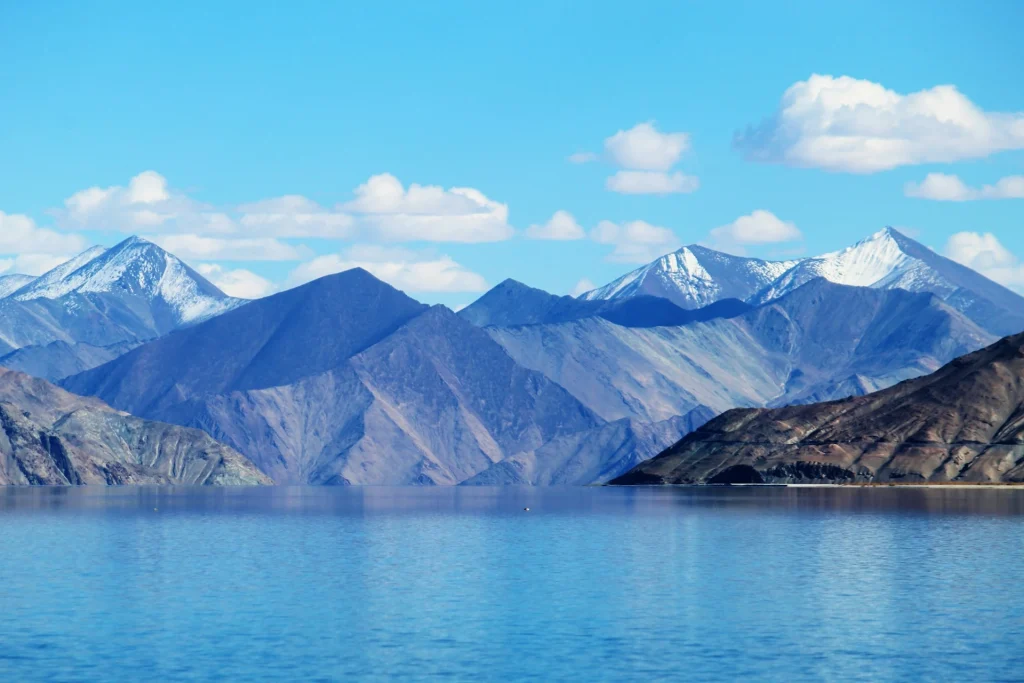
Beginning — Where Heaven and Earth Meet Imagine a desert at a high altitude that is painted in shades of ochre, brown, and deep purple. It is surrounded by the world’s most dangerous mountain ranges. Think of lakes that are the same color as the sky, old monasteries that cling to rocky cliffs, and colorful prayer flags that flutter in the cool, thin air, sending whispers of peace across quiet valleys. This is Ladakh, which means “Land of High Passes.” Ladakh is more than just a place to visit; it’s an adventure that tests the body, inspires the mind, and moves the soul. Ladakh is a one-of-a-kind place for adventurers, spiritual seekers, and nature lovers. This guide will help you find your way around this amazing part of the Himalayas. We will travel across the highest motorable passes in the world, stand in awe at lakes that change color, explore the peaceful world of Buddhist culture, and give you all the important tips you need to plan a safe and unforgettable trip. The Tarzan Way’s immersive storytelling journeys let you responsibly explore the raw, wild beauty of Ladakh while deeply connecting with its landscapes, culture, and people. Are you ready to answer the mountains’ call? Let’s go on a trip to the top of the world. Key Takeaways A Place of Greatness: Find out why Ladakh is known as the “Land of High Passes.” It has some of the highest motorable roads in the world, like Khardung La and Chang La. Iconic Landscapes: Find out about the natural wonders you have to see, like the otherworldly Pangong Tso Lake, the strange sand dunes of Nubra Valley, and the magnetic pull of Magnetic Hill. Spiritual Heartland: Visit the ancient and beautiful Tibetan Buddhist monasteries of Thiksey, Hemis, and Diskit to learn about the peaceful way of life there. Adventure Capital: Learn about exciting things to do, like the famous Chadar Trek, white-water rafting on the Zanskar River, and legendary motorbiking trips. Important Planning and Acclimatization: Learn how important it is to get used to Ladakh’s high altitude and get useful information on when to go, how to get there, and what permits you need. Exploration with care: With help from responsible travel partners like The Tarzan Way, you can learn how to travel mindfully in this delicate ecosystem. Pangong Tso: The Lake That Changes Color Credit: Unsplash The bright blue waters of Pangong Tso are the most famous picture of Ladakh. This saline lake is over 4,350 meters high and runs for an amazing 134 kilometers from India to Tibet. The most magical thing about it is that it changes colors throughout the day, going from blue to green to gray, depending on where the sun is. The Chang La Pass (5,360 m) is a tough part of the journey to the lake. The bare, stark mountains that surround the lake make the area feel very strange and peaceful. Advice for Travelers Plan to spend the night at a campsite near the lake’s shores (in villages like Spangmik or Man) to see the lake’s colors change. It takes about 5–6 hours to get from Leh to Pangong Tso, so leave early. Before going to Pangong, which is even higher, you should spend at least two days getting used to the altitude in Leh. Quick Facts 4,350 meters (14,270 feet) above sea level. Location: It runs along the border between India and China. Type: Endorheic (saline) lake that freezes over completely in the winter. Nubra Valley: The Sky Desert Credit: Unsplash You go down into a valley that feels like another world after crossing the famous Khardung La Pass, which was once thought to be the highest road in the world at 5,602 m. The Nubra Valley is a cold desert at a high altitude that is known for its stunning scenery, silver sand dunes near Hunder, and the one-of-a-kind double-humped Bactrian camels that live there. The Shyok and Nubra (or Siachan) rivers flow through the valley, making it surprisingly green and fertile in the middle of the dry mountains. Another place you have to see is the beautiful Diskit Monastery, which has a huge statue of the Maitreya Buddha looking down on the valley. Why People Want to Go There: It has a beautiful mix of landscapes that you can’t find anywhere else. It is truly unforgettable to ride a camel through sand dunes that are more than 10,000 feet high and see snow-capped peaks in the distance. Advice for Travelers To avoid getting sick from the high altitude, don’t stay at the top of Khardung La for more than 15 to 20 minutes. A camel safari on the Bactrian camels in Hunder is a must-do in Nubra. For a relaxing soak, go to the hot springs in Panamik. A spiritual trip to Ladakh’s old monasteries (Gompas) Credit: Unsplash Ladakh is a stronghold of Tibetan Buddhism. Its landscape is full of beautiful monasteries, or Gompas, that are places of art, spirituality, and learning. Thiksey Monastery: It has a multi-level structure that is often compared to the Potala Palace in Lhasa, Tibet, making it one of the most impressive monasteries. The Maitreya Buddha statue inside is an amazing 49 feet tall. Hemis Monastery: The richest and one of the most important monasteries in Ladakh, Hemis is known for its annual Hemis Festival, which features colorful cultural events and masked dances. Diskit Monastery is the oldest and biggest monastery in Nubra Valley. It has great views and is home to the famous 106-foot Maitreya Buddha statue. Alchi Monastery: Alchi is different because it is built on flat ground next to the Indus River. It is famous for its very old murals and paintings from the 11th century that are very detailed. Advice for Travelers Go to Thiksey Monastery early in the morning, around 6 AM, to see the monks’ deeply moving morning prayer ceremony. When you go to a monastery, wear clothes that cover your shoulders and knees. As a sign of
7 Days in Rajasthan: The Best Way to See the Land of Maharajas
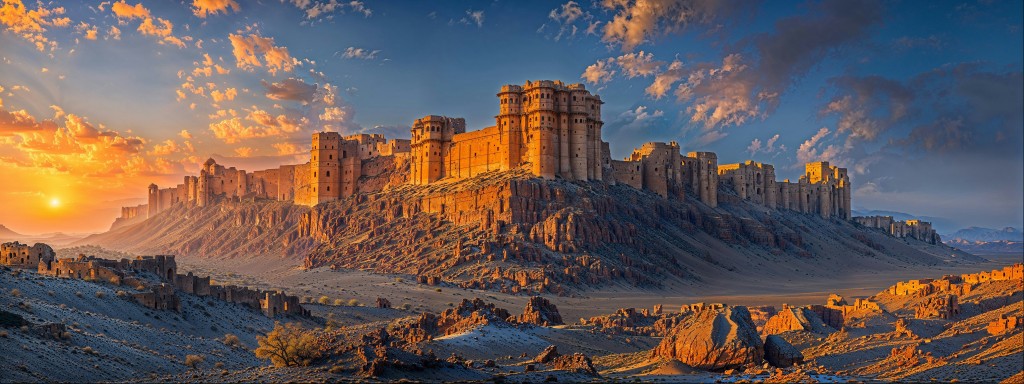
People call Rajasthan the “Land of Maharajas” for a reason. It’s a place where history isn’t just in books; it’s in the huge forts that protect old cities, the beautiful palaces where royalty used to live, and the lively culture that spills out onto every street. When you come here, it’s like stepping into a beautifully illustrated storybook full of stories of bravery, love, and unmatched beauty. I still remember my first trip here—the colours that hit me right away. The men wore bright turbans, the women wore shimmering saris, and the cities were all painted in their own unique colours: Jaipur in a warm blush of pink, Jodhpur in a cool, calming blue, and Jaisalmer in a radiant glow of gold. It’s a traveler’s paradise and a photographer’s dream. But let’s be honest, planning a trip to Rajasthan can be a lot of work. There are so many amazing cities and things to do that it’s hard to know where to start. How do you fit hundreds of years of history into one week? This is where this guide comes in. I’ve made the perfect 7-day Rajasthan itinerary that will give you a deep and rich experience of this amazing state. It includes both must-see sights and opportunities for real connection and discovery. So, get your bags ready and let’s go on a trip through the heart of royal India. A Few Important Tips Before You Go A little planning ahead of time can make your trip to Rajasthan go smoothly and be fun. When to Go: The best time to visit Rajasthan is in the winter, from October to March, when the weather is cooler. The weather is nice and great for seeing the sights. From April to June, the summers can be very hot. Getting Around: Trains and buses connect the state well. The best and most comfortable way to get around on this itinerary is to hire a private car with a driver. This way, you can stop wherever you want. What to Bring: Bring light cotton clothes for the day and a light jacket or shawl for the evenings when it gets cooler. You must have comfortable walking shoes! You should also bring sunscreen, a hat, and sunglasses to keep the sun off of you. A Royal Tour in 7 Days: The Perfect Itinerary for Rajasthan This plan is for a challenging but rewarding trip to Rajasthan’s most famous cities. Get ready for an adventure because it goes quickly! Day 1: Arriving in Jaipur, the Pink City Jaipur, the lively capital of Rajasthan, is where your journey begins. When you first step into the old city, you’ll see why it’s called the “Pink City.” The buildings are all painted a lovely terracotta pink, a colour that means welcome. After checking into your hotel In the Morning, go straight to the famous Hawa Mahal (Palace of Winds). In person, the building’s complicated, honeycomb-like front is even more beautiful. Royal women could watch street parades from this building without being seen. In the afternoon, go to the City Palace to see the heart of royalty. The architecture of this large complex is a lovely mix of Rajasthani and Mughal styles. The current royal family still lives in part of it. Don’t miss the beautiful gates in the inner courtyard; each one is a piece of art. Evening: Get lost in the chaos and colour of Jaipur’s markets. Johri Bazaar is known for its jewellery, and Bapu Bazaar is known for its textiles and leather goods. It’s a great place to buy souvenirs and get a sense of the city’s life. Foodie Corner: For dinner, go to a heritage restaurant like Chokhi Dhani and have a traditional Rajasthani thali. It’s a great way to experience the culture. Day 2: Jaipur—Palaces, Forts, and Stars Today is all about seeing the amazing forts and buildings that are just outside the main city. Get up early In the Morning and head to the beautiful Amber Fort (Amer Fort). This fort is stunning, sitting on a hilltop with a view of Maota Lake. For a truly royal experience, you can walk up, take a jeep, or ride an elephant to the entrance. In the afternoon, go back towards the city to see the Jantar Mantar, an amazing 18th-century astronomical observatory. It’s a UNESCO World Heritage Site, and it’s hard to believe how big and old the tools used to track celestial bodies are. End your day with a stop for a photo at the peaceful Jal Mahal (In the Evening). This beautiful palace looks like it floats in the middle of Man Sagar Lake. It looks especially nice at sunset. Pro Tip: When you go to Amber Fort, it’s a good idea to hire a licensed guide at the entrance. You will have a much more interesting visit if you hear their stories about the fort’s history, secret passages, and the lives of the Maharajas. Day 3: Jodhpur, the Beautiful Blue City Note for travellers: It takes about six hours to drive from Jaipur to Jodhpur. Get up early to get the most out of your day. Welcome to Jodhpur, the “Blue City.” As you get closer, you’ll see a sea of blue houses below the city’s strong protector, the Mehrangarh Fort. In the afternoon, go straight to the Mehrangarh Fort after you get there and check in. In my opinion, this is one of the most beautiful and well-kept forts in all of India. From a rocky cliff, it rises high above the city. The audio guide is great and tells great stories as you walk through the palaces and courtyards. In the evening, walk from the fort to the old city. Walk through the narrow, blue-painted streets and feel the charm of the Middle Ages. The busy Sardar Market near the Ghanta Ghar (Clock Tower) is a great place to end your day. It’s a great place to watch people and try local food. Foodie Corner: You have to
AI-Powered Travel Guide: Delhi to Leh Ladakh Adventure
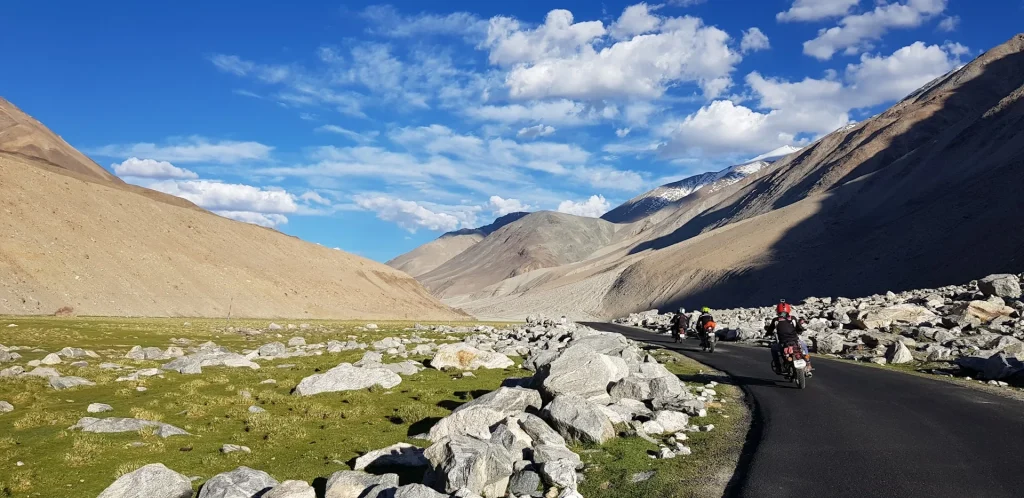
There is a place in the middle of the beautiful Himalayas that has stark beauty, old monasteries, and landscapes that touch the heart. Leh Ladakh, which means “Land of High Passes,” is more than just a place to visit; it’s a fun pilgrimage for people. People who want to push their limits and get back in touch with nature in its most basic form are drawn to its rough terrain, rich culture, and beautiful views. The best adventure is to leave the busy plains of Delhi and head to this desert in the mountains. But getting ready for a trip like that can be just as hard as the trip itself. Because the area is so far away, has such high altitudes, and has so few roads, it needs careful and effective planning. This is where old landscapes and new technology meet. Consider getting a digital co-pilot who is smart for your trip. This co-pilot would know how you like to travel, how much money you have, and how much adventure you want. It would then plan the best trip for you. Welcome to the next level of travel. This is your AI-powered travel guide to a great trip from Delhi to Leh Ladakh. We’ll take you on a virtual trip and give you important advice, the best itineraries, and insider tips to help you plan your action-packed trip to this beautiful Himalayan wonderland. Leh Ladakh: The Crown Jewel of the Himalayas Credit: Unsplash Leh Ladakh is a very high desert area in the northernmost part of India. The Karakoram and Himalayan mountain ranges are very big, and it is between them. The winters are very cold, but the summers are surprisingly warm. The mountains and lakes are dry and brown, and the lakes are so blue that they look impossible. This is the best playground for people who like to have fun. There are a lot of fun things to do in Ladakh that will get your heart racing. You can hike through beautiful places like the Markha Valley, cross the frozen Zanskar River on the famous Chadar Trek in the winter, feel the rush of adrenaline while white-water rafting on the Indus River, or ride your motorcycle over the highest mountain passes in the world. Rich Culture: Tibetan Buddhist culture has been around in the area for a long time. You’ll see old, peaceful monasteries on cliffs, colourful prayer flags waving in the wind, and people who are nice to you living there. Going to a monastery festival or staying in a traditional homestay is a big part of the experience because you get to learn about the local culture. Part 1: The Blueprint: How to Use AI to Plan Your Trip Credit: Unsplash Planning a trip to Leh Ladakh can be hard. How do you pick the best route? What time is best to go? How do you find time to visit all the important places? This is when an AI-powered travel guide comes in handy. AI travel planners are more than just search engines. They use smart algorithms to create personalised travel plans that are perfect for you. It’s like having your own travel guide. Hyper-Personalized Itineraries: You can tell your AI planner, “I have 10 days, a mid-range budget, and I’m an adventure lover who wants to do a short trek and see Pangong Lake.” The AI will instantly generate a day-by-day plan that maximises your time and matches your interests. Smart Assistant in Real Time: While you’re on your trip, AI-powered apps can give you real-time updates on the weather, road closures (which happen a lot in Ladakh), and safety alerts. They can even come up with new routes or things to do right away if your original plan doesn’t work out. Budget Optimisation: AI tools can help you stick to your budget by finding the best deals on flights, hotels, and even rental bikes. You won’t have to miss out on fun things to do. Finding Hidden Gems: AI can look at travel blogs, reviews, and geo-tagged photos to suggest places that aren’t as well-known as the big ones but still fit your interests. For instance, it might recommend a less well-known monastery or a beautiful view that other tourists might not see. Two Ways to Travel from Delhi to Leh Ladakh Credit: Unsplash The first part of your adventure is the trip itself. There are two main ways to travel from Delhi to Leh: Option 1: The Fast and Easy Way Is to Fly Flying straight from Delhi to Kushok Bakula Rimpochee Airport (IXL) in Leh is the quickest way to get there. Pros: It’s quick (about 90 minutes), easy to get to, and the views of the snow-capped Himalayan peaks from the air are amazing. Cons: The biggest problem is that you might get Acute Mountain Sickness (AMS). It’s hard on the body to fly straight from Delhi, which is at sea level, to Leh, which is at 11,500 feet. You should spend at least 48 hours in Leh to fully rest and get used to the high altitude. Pro Tip: Use an AI-powered flight aggregator that uses predictive analytics to help you find the best time to buy your ticket at the lowest price. Option 2: By Road (The Most Fun Way) This is the classic thing that everyone wants to do. A road trip lets your body slowly get used to the changes in the landscape and lets you see them happen. The trip is about 1,000 kilometers long and can be done by bike, car, or bus. Pros: The views are amazing, and it’s a great trip. It is much easier to get used to the height because the climb is so slow. Cons: It takes a long time, at least two full days of driving. Driving on the roads can be hard, and they are only open for a few months each year. Pro-Tip: Use an AI-powered route planner to find the best places to stop
From North to South India: 10 Must-Visit Destinations
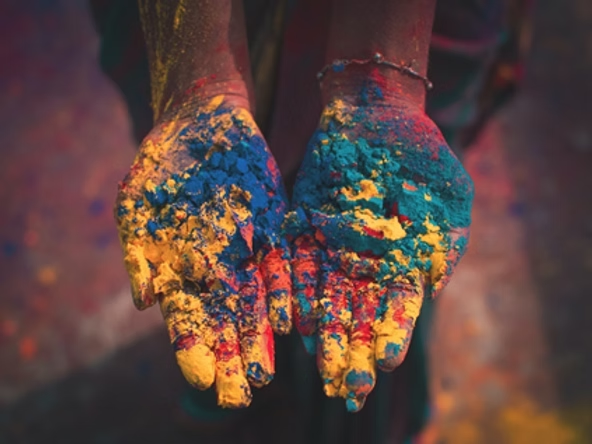
India is a vibrant mosaic of cultures, landscapes, and traditions that captivates travellers from every corner of the globe. From the snow-capped peaks of the Himalayas to the tranquil shores of the Indian Ocean, this enchanting country offers a wealth of travel experiences that are as diverse as they are breathtaking. A journey through India is a journey through time, a sensory explosion, and a deep dive into the heart of ancient civilisations and bustling modern life. The appeal of India lies in its unmatched diversity. Each region has a unique story to tell, from the historic forts of the North and the spiritual havens of the Ganges to the tropical splendour of the South. It’s a place where age-old customs coexist with cutting-edge technology, creating a colourful tapestry that stimulates the senses and leaves you with memories that last a lifetime. Join us as we embark on a virtual journey across the length and breadth of this magnificent nation. This curated list will guide you through the best travel destinations in India, spanning from the majestic North to the serene South, ensuring your trip is an extraordinary adventure that will leave an indelible mark on your soul. The Majestic North: A Journey Through History and Spirituality The north of India is the cradle of empires, home to iconic monuments, spiritual epicentres, and the country’s bustling capital. 1. Delhi: The Heart of India’s Rich Heritage Credit: Unsplash Best For: History Buffs, Foodies, and Culture Vultures Delhi, the vibrant capital, is a city of fascinating contrasts, skillfully blending its profound history with a modern, global vibe. It is the perfect starting point for any Indian adventure, offering a miniature version of the entire country. Top Experiences in Delhi: Explore Mughal Grandeur: Visit the Red Fort, a UNESCO World Heritage Site, and the majestic Humayun’s Tomb, a stunning precursor to the Taj Mahal. Marvel at Ancient Architecture: Climb the towering Qutub Minar, the world’s tallest brick minaret, and see the mysterious Iron Pillar in the same complex. Get Lost in Old Delhi: Navigate the chaotic, narrow lanes of Chandni Chowk, a sensory overload of sights, sounds, and smells. It’s a paradise for shoppers and food lovers. Taste the Street Food: You cannot leave Delhi without trying its famous street food. Indulge in spicy chaat, succulent kebabs, and sweet jalebis. Pro Tip: Navigate the city like a local by using the Delhi Metro. It’s a clean, fast, and efficient way to bypass traffic and reach major attractions. 2. Agra: Witnessing the Monument of Love Credit: Unsplash Best For: Romantics, Architects, and Bucket-List Tickers Home to the Taj Mahal, one of the most recognisable structures in the world, Agra is a city steeped in history and romance. This captivating mausoleum is the “epitome of love,” drawing millions of visitors who come to witness its ethereal beauty. Top Experiences in Agra: Be Mesmerised by the Taj Mahal: This 17th-century white marble mausoleum, built by Emperor Shah Jahan for his beloved wife Mumtaz Mahal, is a timeless symbol of love. Its perfect symmetry and intricate inlay work are a testament to masterful craftsmanship. Discover the Agra Fort: Explore this massive red sandstone fortress, which was the main residence of the Mughal emperors. It offers fantastic views of the Taj Mahal from across the river. Visit Itimad-ud-Daulah’s Tomb: Often called the “Baby Taj,” this exquisite tomb is considered a draft of the Taj Mahal and is beautifully decorated with detailed marble work. Pro Tip: For the most magical experience, visit the Taj Mahal at sunrise. The crowds are smaller, and the soft morning light makes the marble glow with stunning hues of pink and orange. 3. Jaipur: The Pink City’s Royalty and Charm Credit: Unsplash Best For: Photographers, Shoppers, and Lovers of Royalty Jaipur, the capital of Rajasthan, is a vibrant city known for its majestic palaces, bustling markets, and distinctive pink-hued buildings. It offers a mesmerising blend of traditional Rajasthani charm and modern energy. Top Experiences in Jaipur: Ascend to Amer Fort: This magnificent UNESCO World Heritage Site, perched on a hilltop, is a stunning example of Rajput architecture with its large courtyards and beautiful mirror work. Admire the Hawa Mahal: See the famous “Palace of Winds” with its intricate façade of 953 windows, designed to allow the royal women to observe street festivities unseen. Explore the City Palace: A sprawling complex of courtyards, gardens, and buildings that still serves as the residence of the royal family. Shop in Johari Bazaar: This bustling market is a paradise for shoppers, famous for its jewellery, textiles, and traditional handicrafts. Pro Tip: Don’t miss the panoramic view of the city from Nahargarh Fort, especially during sunset. It offers a breathtaking perspective of the entire Pink City. 4. Varanasi: Spiritual Serenity on the Banks of the Ganges Credit: Unsplash Best For: Spiritual Seekers, Photographers, and Intrepid Travellers Varanasi, the spiritual capital of India, is one of the oldest living cities in the world. Located on the banks of the sacred Ganges River, it’s a city where life, death, and divinity converge in a powerful and chaotic display of ancient rituals. Top Experiences in Varanasi: Witness the Ganga Aarti: Every evening, a mesmerising and highly choreographed prayer ceremony is held at Dashashwamedh Ghat, filled with chants, bells, and fire. It’s an unforgettable spiritual spectacle. Take a Sunrise Boat Ride: A boat ride on the Ganges at dawn is the best way to see the city come to life. You’ll witness pilgrims taking holy dips, cremations at Manikarnika Ghat, and the beautiful morning light on the ancient buildings. Wander the Narrow Alleys: Get lost in the labyrinthine lanes of the old city, a world of tiny shops, hidden temples, and wandering holy men. Pro Tip: Varanasi can be intense and overwhelming. Go with an open mind, be respectful of the sacred rituals you will witness, and allow yourself to simply observe. 5. Rishikesh: The Yoga Capital and Adventure Hub Credit: Unsplash Best For: Yoga Enthusiasts, Adventure Junkies, and Backpackers Nestled in
9 Indian Ancient Ruins to See to Get Away from Technology
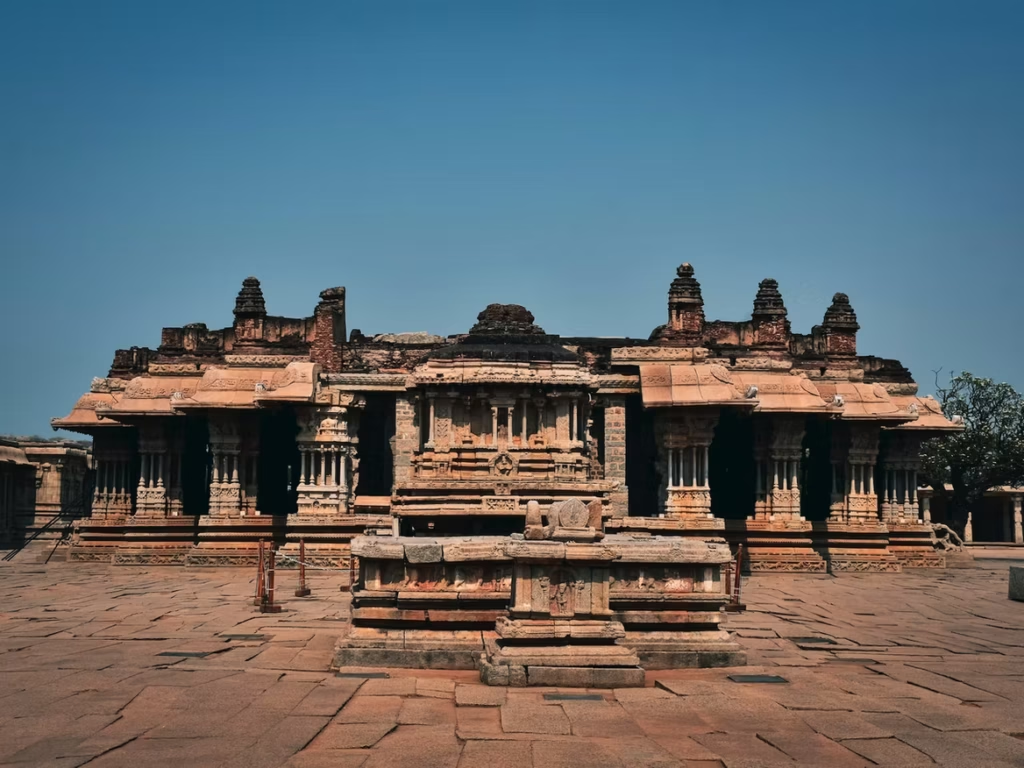
With all the notifications, scrolling, and buzzing of digital life, the need to disconnect has never been stronger. A lot of the time, we dream of going somewhere where we can turn off our phones, clear our heads, and just be in the moment. A beach or a mountain retreat is a great choice, but the ancient ruins of India are a special kind of peaceful place that has been quiet for hundreds of years. These old buildings are full of forgotten stories from the past, showing off the amazing art and engineering of our ancestors. When you visit them, it’s like going back in time to a place without Wi-Fi and deadlines. They want you to walk around, think, and hear the whispers of the past. These peaceful and quiet places are the best places to go to get away from technology. It’s a chance to get away from the noise and reconnect with nature, history, and yourself. “So, get ready to pack your favorite books and a basket for a picnic. These 9 amazing old ruins in India are great places to get away from the modern world.” 1. Raigad Fort in Maharashtra: The Capital of an Empire A picture from a Wikipedia page Raigad Fort was the capital of the great Maratha warrior Chhatrapati Shivaji Maharaj. It is on top of a huge hill in the Sahyadri mountains. This fort, which was thought to be impossible to break into, is a symbol of Maratha pride and is known as the “Gibraltar of the East.” Why It’s Great for a Digital Detox: Walking around the fort is a great way to stay active and present because it is so big. From the top, the views of the valleys and hills all around are amazing and make you feel like you’re on top of the world. The Story Behind the Ruins: Shivaji was crowned king at the fort and spent a lot of time there during his reign. You can see the ruins of his court, public spaces, watchtowers, the main market, and his tomb today. Traveling Toolkit: The best time to go is from September to March. The monsoon season is also pretty, but the trek can be slippery. Things to Do: You can either hike up the 1,737 steps to the top, which takes about 2–3 hours, or take a 4-minute scenic ride on a ropeway. Visit the ruins and take in the beautiful views. Pro Tip: Choose to hike up and take the ropeway down as a pro tip. The hike is worth it, and you’ll have more energy to explore the big fort area at the top before taking a nice ride down. 2. The Martand Sun Temple in Jammu and Kashmir is a wonder of the Himalayas A picture from a Wikipedia page The Martand Sun Temple is one of the most beautiful and underrated ancient ruins in India. It stands proudly against a backdrop of snow-capped Himalayan peaks. King Lalitaditya built this temple in the 8th century to honor Surya, the Sun God. Why It’s Great for a Digital Detox: The temple is in a quiet, open field near Anantnag and gives off a deep sense of peace. The ruins are grand, and the Kashmir valley is beautiful. It’s a great place to think and take pictures. The Story of the Ruins: The temple is a great example of Kashmiri architecture because it combines styles from Gandhara, Gupta, Greece, and Rome. Even though it is in ruins, its beautiful colonnades and detailed carvings still give a sense of how grand it used to be. Traveler’s Toolkit: The best time to go is from April to October, when the weather is nice. Things to Do: Look at the temple’s architecture, have a quiet picnic on the lawns, and take pictures of the ruins with the beautiful mountains in the background. Pro Tip: Get a local guide from Anantnag. A guide can help you understand the temple’s history and the meaning of its unique architectural features. 3. Hampi, Karnataka: The Lost Empire of Boulders A picture from Unsplash- Sandip Hampi was once the beautiful capital of the powerful Vijayanagara Empire. Now, it is a UNESCO World Heritage Site and one of the most beautiful places in India. The remains of grand temples, royal palaces, and busy markets are scattered across a strange landscape of huge, rust-colored boulders and lush green rice fields. Why It’s Great for a Digital Detox: The size of Hampi is so big that it makes you want to walk, bike, and explore for hours. The Tungabhadra River flows peacefully through the otherworldly landscape, which has a calming effect that makes you forget about your phone. The Story Behind the Ruins: Hampi was a rich, busy city from the 14th to the 16th centuries, known for its art and architecture. After it was taken over and left in ruins, its glory came to an end. Today, all that is left is a stunning open-air museum. The Vittala Temple, with its famous stone chariot and musical pillars, shows how skilled people were at the time. Traveler’s Tools: The best time to go is between October and February, when the weather is nice. Rent a bike or scooter to see the huge ruins, take a coracle boat ride on the river, climb Matanga Hill for a beautiful view of the sunset, and listen to the musical pillars at Vittala Temple. Pro Tip: If you want a more relaxed and disconnected vibe, stay in a guesthouse on the “hippie island” side of the river (Anegundi). There isn’t much internet access here, so you’ll have to naturally take a break from technology. 4. Dhanushkodi, Tamil Nadu: The Ghost Town at the End of the World A picture from the Wikipedia website Dhanushkodi is a ghost town that is hauntingly beautiful. It is on the southeastern tip of Pamban Island. In 1964, a terrible cyclone wiped out the whole town, which used to be a busy ferry
Shimla Guide: Discover the Charm of the Hills
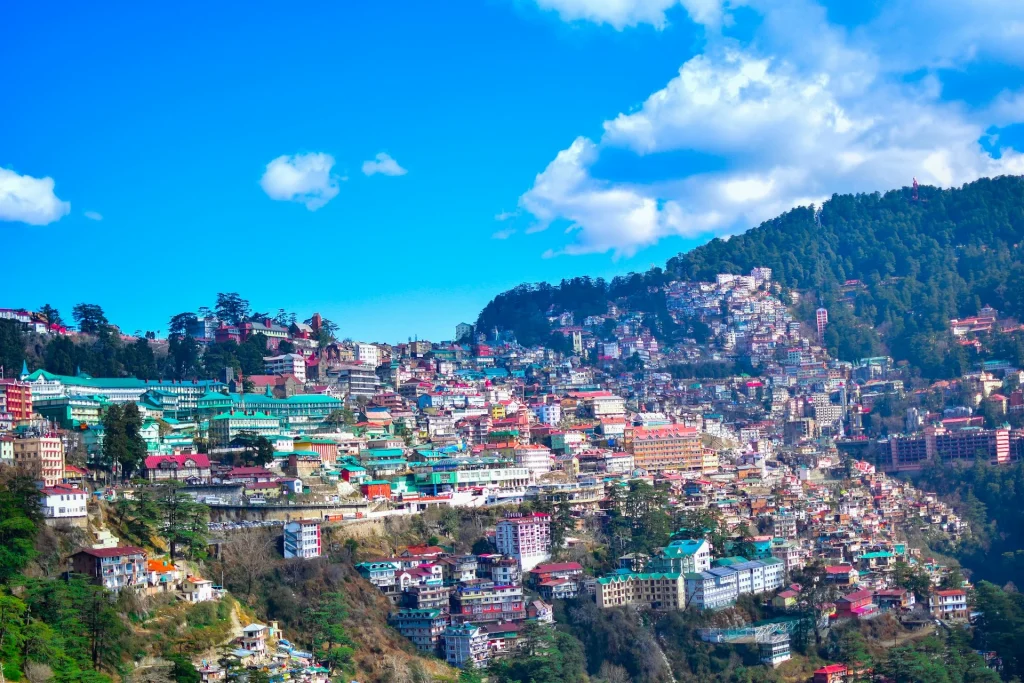
Where the Hills Echo: An Introduction, The Past Picture a place where the air smells like pine trees covered in mist, colonial-era buildings stand as proud reminders of a time long gone, and the majestic Himalayas rise up behind it all. This is Shimla, not a dream. This beautiful hill station was once the summer capital of British India. It still draws travellers in with its unique mix of natural beauty and architectural elegance. This place is more than just a vacation spot; it’s a trip back in time. Shimla is the answer for people who want to get away from the noise of the city and into a world of peaceful scenery and interesting history. This guide is meant to be your best friend as you explore every part of the “Queen of Hills.” We’ll show you around its famous sights, take you on secret trails, let you taste its local foods, and give you all the useful advice you need to plan an amazing trip. The Tarzan Way brings immersive storytelling journeys to life, allowing travellers to safely explore Shimla’s historic lanes and beautiful viewpoints, where every corner has a story and every view is a work of art. Are you ready to be charmed? Let’s go to the heart of Shimla and find out why it has always been so appealing. Key Takeaways: A Historic Getaway: Find out why Shimla was the summer capital of British India and see its beautiful colonial buildings, such as the Viceregal Lodge and Christ Church. Famous Places: Find out about the must-see places, such as The Ridge, Mall Road, and the Jakhoo Temple, which has a huge statue of Lord Hanuman. UNESCO World Heritage: Take a ride on the Kalka-Shimla Toy Train, a historic train ride that gives you stunning views of the Himalayas. Beyond the Town: Kufri is great for adventure sports, Chail is great for its peaceful palace, and Mashobra is great for its peaceful nature trails. Practical Planning: Find out when the best time to go is, how to get to Shimla, where to stay, what to eat, and other important travel tips. Be a responsible traveller: Learn how to travel mindfully in the Himalayas so you can protect its beauty and culture with help from groups like The Tarzan Way. 1. A Look into Shimla’s Royal Past Credit: Unsplash Shimla was once a quiet group of villages before it became a busy tourist spot. In the 1820s, British officers looking for a break from the hot Indian summers found its nice weather and changed their fate. In 1864, it was officially named the British Raj’s summer capital. For the next few decades, the whole government would move here from Calcutta (and later Delhi) for six months each year. Because of this yearly migration, Shimla became a centre of power, glamour, and political intrigue. It was given the nickname “Queen of the Hills.” The beautiful buildings, the carefully planned Mall Road, and the overall layout of the town are all lasting gifts from this time period. Advice for Travellers You can see rare photos and objects from the British Raj at the Shimla Heritage Museum. Hire a local guide to take you on a heritage walk so you can hear interesting stories and anecdotes that aren’t in guidebooks. Read Rudyard Kipling’s “Kim,” which has Shimla in it a lot, to get a sense of what the town was like at that time. Quick Facts Shyamala Devi, the goddess Shyamala, was the name before. Height: About 2,276 metres (7,467 feet). Importance in history: From 1864 to 1947, it was the summer capital of British India. 2. The Ridge and Mall Road are the heart of Shimla Credit: Unsplash A leisurely walk along The Ridge and Mall Road, Shimla’s two most famous streets, is a must for anyone who goes there. In the middle of town, The Ridge is a big open area with amazing, unobstructed views of the snow-capped Himalayan ranges. It is the centre of all cultural activities and is surrounded by important landmarks. Mall Road, a street without cars, is just below The Ridge. It is lined with colonial-style buildings, busy shops, cute cafes, and restaurants. It’s the main shopping street and social centre of Shimla. It’s a great place to go for a walk, look for souvenirs, or just enjoy the lively atmosphere. Tips for Travellers The Ridge has the best views and photo opportunities at sunrise and sunset. It’s a classic Shimla experience to get soft ice cream from the vendors on Mall Road. Wear shoes that are easy to walk in because the road is only for pedestrians. Why It Draws Tourists: Because it’s the best way to experience a hill station. The mix of beautiful mountain views, old buildings, and lively local life makes for a relaxing and energising atmosphere. 3. Amazing buildings from the British period Credit: Unsplash Shimla is a museum of colonial architecture that is still in use. The neo-Gothic, Tudor, and Victorian styles of the buildings here tell stories of a grand past. Christ Church is the second-oldest church in North India and is on The Ridge. You have to see it because of its beautiful stained-glass windows, tall spire, and peaceful atmosphere. At night, when the church is lit up, it looks especially nice. Viceregal Lodge and Botanical Gardens: This used to be the home of the British Viceroy of India. Now it is home to the Indian Institute of Advanced Study. Scottish Baronial architecture is amazing. Take a guided tour of the inside to see the teak-panelled walls and learn about the important decisions that were made there, like the ones that led to the partition of India. Gaiety Theatre: A Victorian theatre on Mall Road that has been beautifully restored. It used to host famous people like Rudyard Kipling. It still hosts a variety of cultural events and plays. Advice for Travellers Because the times for the Viceregal Lodge tour are set, you should check
10 Mysterious Places That Still Baffle Us: The World’s Greatest Enigmas
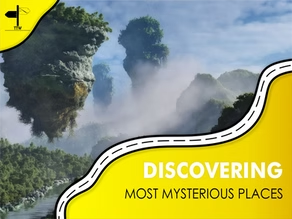
There are amazing things about our planet, but there are also secrets hidden beneath its famous landmarks and busy cities that make us question what we know about the world. The Bermuda Triangle and the Pyramids of Giza are two places that make us think and question what we think we know. But these well-known puzzles are only the beginning. There are alien-like landscapes, haunted forests, and ancient buildings that look like they belong to another world, hidden in faraway parts of the world. These are the places that make us want to go on an adventure. They are the places that scientists have a hard time explaining and that storytellers have turned into legends for hundreds of years. A trip to one of these places is more than just a vacation; it’s an adventure into the heart of a mystery, a chance to feel the thrill of the unknown and connect with the deeper, stranger side of our world. “We have put together the ultimate list of the most mysterious places on Earth after looking into the world’s most difficult puzzles. Get ready for a trip that will change how you see things and give you stories to tell for the rest of your life.” 1. The Dragon’s Blood Trees of Socotra Island, Yemen: An Earthly Sci-Fi Planet Credit: pexels.com Think about what it would be like to land on a planet from a sci-fi movie. That’s how it feels to be on Socotra Island. This island in the Indian Ocean is so far away that a third of its plants can only be found there. The Dragon’s Blood Tree is the most famous and strange of these. The Mystery: These weird trees that look like umbrellas are from another world. Their thick, upturned canopy looks like a flying saucer on top of a trunk. Crimson Red Sap: The tree gets its name from the dark red resin that comes from it. This sap, which looks like blood, has been used for hundreds of years in medicine, dye, and incense. Unique Ecosystem: How did this strange and one-of-a-kind ecosystem come to be in total isolation? Scientists still don’t agree on where the island came from, but they do agree that it is a living laboratory of evolution. Scientists think that Socotra’s unique plants are the result of its long geological separation from mainland Africa, along with extreme heat and drought that made the plants adapt in strange ways. The tree’s odd shape helps it stay alive in dry places by lowering evaporation and giving its roots shade. Traveler’s Pro Tip: It’s hard to travel to Yemen right now because of political instability, but you can still see the island’s magic in documentaries like “Socotra: The Hidden Land.” If you do want to go, you should only do it through a reputable and specialized tour agency that knows how safe it is there. 2. Lake Natron in Tanzania: The Lake That Turns Animals to Stone Credit: Nickbrandphotography There is a lake in northern Tanzania that is so dangerous that it looks like it belongs on Mars. Lake Natron is a salt lake with a dark secret: any animal that dies in its waters is preserved in a creepy, statue-like state. The Secret: Petrified Creatures: When birds and other animals die and fall into the lake, they become calcified, which means that the chemicals in the lake turn them into stone-like statues. Their bodies are perfectly preserved, even the last feather. Blood-Red Water: The lake’s harsh conditions are perfect for salt-loving microorganisms, which can make the water look red or pink. A Deadly Trap: Why do so many animals die here? The lake’s surface can confuse birds, making them crash into the water, where the deadly chemicals start to work. The Theories & Explanations: The “petrifying” effect is not magic; it is chemistry. The lake has a very high pH level, which is similar to ammonia. It also has a lot of sodium carbonate and other minerals that come from nearby volcanoes. This mix of chemicals is a great preservative that mummifies the bodies of animals that die there. Tip for travelers: You can’t swim in Lake Natron, and getting too close can be dangerous. The best way to see it is to go on a guided safari from Arusha, which is close by. It’s interesting that the lake is one of the most important places in the world for Lesser Flamingos to breed. They have learned to live in its harsh conditions. 3. The Forbidden Continent: The Mysteries of Antarctica Credit: pexels.com Antarctica is the most isolated and uncharted continent on Earth, a realm of ice and enigmas. Because of its harsh conditions and political agreements, most of it is off-limits to regular people. The Mystery: The “Pyramids”: Satellite pictures have shown that there are several mountains that look like pyramids sticking out of the ice. Some people think that these are man-made structures built by an ancient civilization, while others think that UFOs were involved. The Antarctic Treaty is an international agreement that forbids any military activity and carefully controls who can go there and what they can do. This has led to conspiracy theories that governments are hiding something there. What Lies Beneath the Ice: The ice sheet in Antarctica is as thick as 3 miles. No one knows for sure what ancient secrets are hidden underneath, like lost civilizations or unknown life forms. Theories & Explanations: Scientists say that the pyramids are “nunataks,” which are rocky mountain peaks that have been worn down by wind and ice over millions of years into a shape that looks like a pyramid. The Antarctic Treaty is there to keep the continent’s delicate environment safe for scientists to study. Travel Tip: You can’t go inside the “forbidden” area, but you can take a cruise to the Antarctic Peninsula. Even though these trips cost a lot of money, they give you a chance to see the continent’s amazing animals and stunning
Women’s Solo Travel: 15 Safety & Empowering Tips
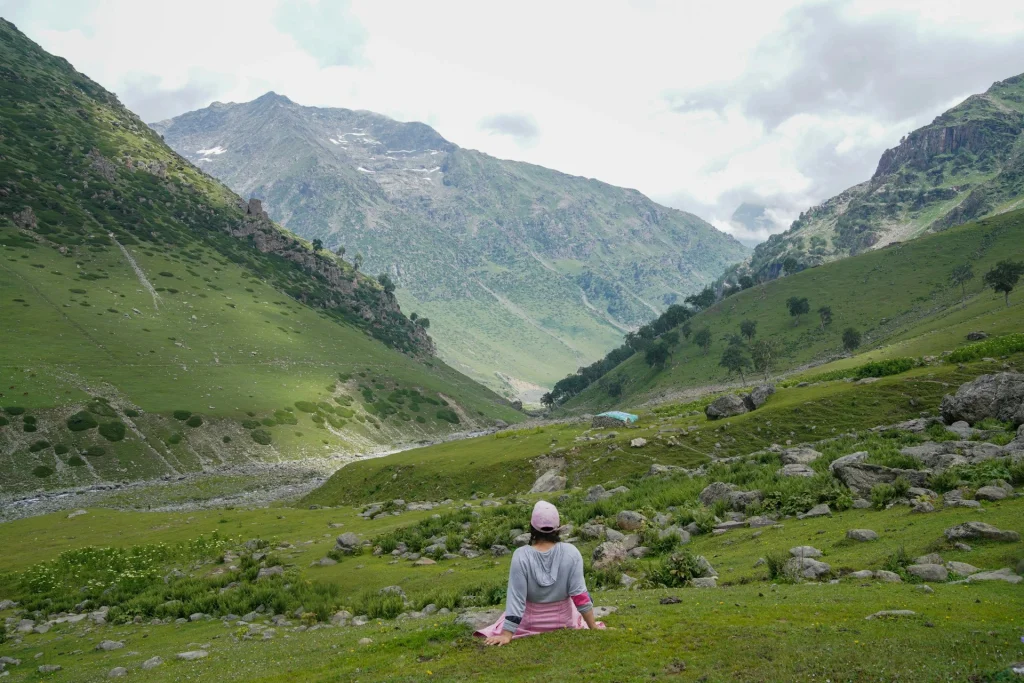
As a woman, deciding to travel alone is one of the most powerful things you can do. It’s a journey of freedom, independence, and finding yourself. Almost two-thirds of travellers today are women, which makes the world easier to get around than ever. But it’s perfectly normal to be a little nervous. It’s normal to have questions like “Is it safe?” or “Can I really do this alone?” when you’re thinking about going to a place as beautiful and complicated as Kashmir. Don’t be afraid! Being prepared doesn’t mean being reckless when you travel alone. If you plan ahead and have the right attitude, you can travel almost anywhere in the world with ease and happiness. You can have the empowering, life-changing experience you’ve always wanted on your own trip. This is the best guide you can find, full of useful tips and tricks to make you feel ready and confident for your trip. We’ll talk about everything from how to pack smartly and stay safe to how to enjoy the amazing freedom of being alone. These tips will help you get the most out of your adventure, no matter how experienced you are. Let’s get going! Part 1: The Foundation—Planning and Getting Ready (Before You Leave) Before you leave, there are a lot of things you need to do to make sure your solo trip goes well. The key to confidence is being well-prepared. 1. Learn how to do research well Credit: pexel.com Knowledge is the most important thing you can have before you go anywhere, especially to a place with a unique culture like Kashmir. Doing research on your destination will help you avoid common mistakes, show respect for the local culture, and learn more about it. What to Look Into: Customs and Culture: Find out about the rules of behaviour, dress codes, and social norms in your area. In many parts of India, for instance, it is polite to eat with your right hand. Neighbourhoods that are safe: Find the best and safest places to stay in each city. Check out the reviews and look at a map to see how central the areas are. Some common scams are: A quick search for “tourist scams in [your destination]” can help you avoid a lot of problems. Know about them so you can spot and stay away from them. What’s going on now: If you’re going to places like Kashmir, it’s important to keep an eye on the news and any travel warnings. Pro Tip: Don’t just use general travel guides. Read new blogs and watch YouTube vlogs by other women who travel alone. Their firsthand accounts and useful tips are very helpful. 2. Make a smart and flexible schedule Credit: pexel.com A plan gives you structure and security, but you need to be able to change it if you need to. What to Plan: Book Your First Night: You should always book your first night in a new city. This takes away the stress of having to find a place to stay after a long trip. Plan out your days: You should have a general idea of what you want to do and see each day, but don’t plan too much. Make sure you have time for unexpected adventures! Getting around: Find out how to get from one place to another. It’s important to book trains in India ahead of time. Pro Tip: Make sure you have both a digital and a paper copy of your itinerary. Give a trusted friend or family member back home the digital version so they know where you are most of the time. 3. Don’t pack too much Credit: pexel.com Packing for a trip alone is a tricky business. You should be ready for a lot of different things, but you also want to be able to carry your bags comfortably by yourself. The Basics: The Right Bag: A rucksack that is comfortable and long-lasting is often easier to carry than a suitcase, especially on bumpy streets or crowded trains. Layered Clothing: Bring clothes you can wear in layers so you can adjust to changing temperatures. A big scarf or sarong is a must-have for any woman travelling alone. You can use it as a head covering when you go to religious sites, as a shawl to cover up, as a beach towel, or as a blanket. A basic first aid kit should have pain relievers, band-aids, antiseptic wipes, and any medications you take. A doorstop for extra security in hotel rooms, a personal safety alarm, and a small padlock are all safety items. Pro Tip: Use packing cubes to keep your bag neat and to squeeze your clothes down. This will save you a lot of room and let you find what you need without having to unpack everything. 4. Organise Your Money and Papers Credit: pexel.com Having a smart money plan and keeping your important papers in order can help you avoid a lot of stress. Papers: You should make at least two copies of your passport, visa, and insurance papers. Put them somewhere else than the originals. Store digital copies in your email and in a safe cloud storage service like Google Drive or Dropbox. Cash: Change things up: Don’t ever depend on just one source of money. Bring both cash and at least two different debit or credit cards. Tell Your Bank: Tell your bank about your travel plans so they don’t block your cards for strange activity. Cash in an emergency: Put some extra cash, like $100 USD, in a separate bag from your main wallet in case of an emergency. Pro Tip: To keep your cash and cards safe, especially in crowded places, use a money belt or a hidden wallet that you can wear under your clothes. 5. Tell people and connect Credit: pexel.com It is important for your peace of mind and the peace of mind of your loved ones back home to stay in touch. What to Do: Tell Others About



